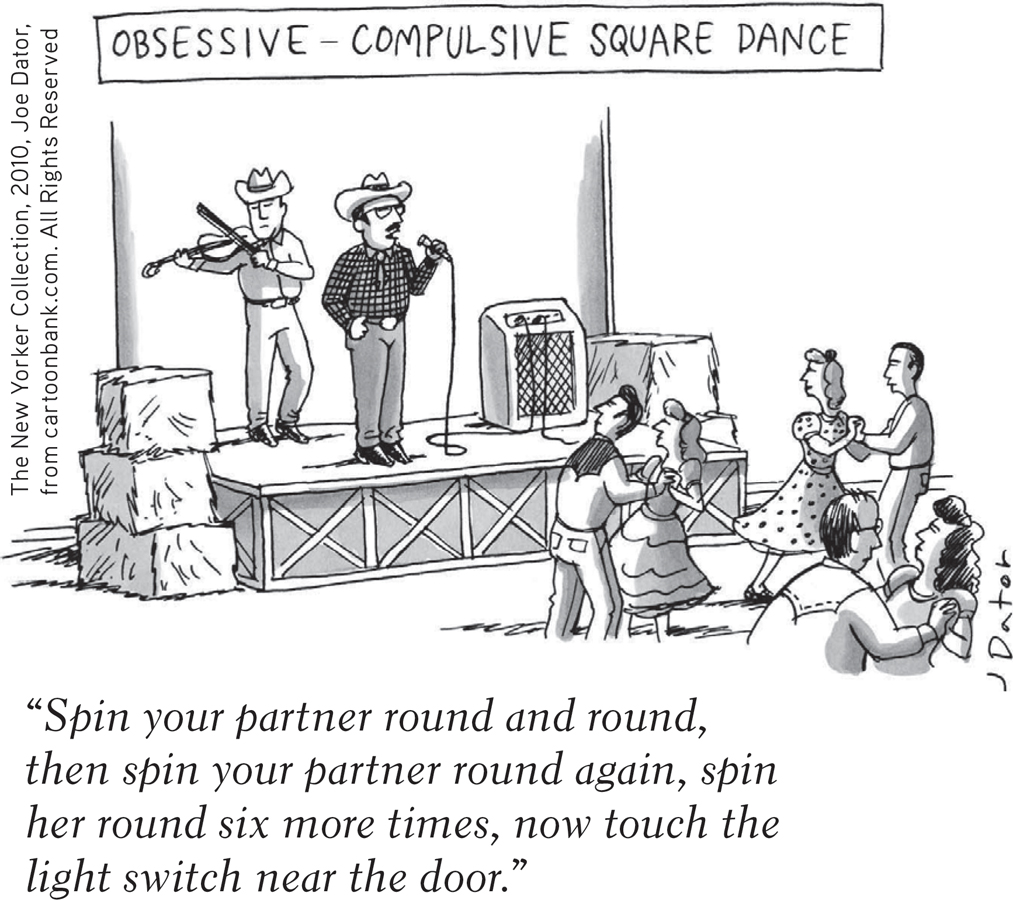50.2 Obsessive-Compulsive Disorder (OCD)
50-

As with the anxiety disorders, we can see aspects of obsessive-compulsive disorder (OCD) in our everyday behavior. We all may at times be obsessed with senseless or offensive thoughts that will not go away. Or we may engage in compulsive behaviors, perhaps lining up books and pencils “just so” before studying.
Obsessive thoughts and compulsive behaviors cross the fine line between normality and disorder when they persistently interfere with everyday living and cause distress. Checking to see you locked the door is normal; checking 10 times is not. Washing your hands is normal; washing so often that your skin becomes raw is not. (TABLE 50.1 offers more examples.) At some time during their lives, often during their late teens or twenties, 1 to nearly 3 percent of people cross that line from normal preoccupations and fussiness to debilitating disorder (Kessler et al., 2012). An analysis of 14 twin studies showed that OCD has a strong genetic basis (Taylor, 2011). Although the person knows them to be irrational, the anxiety-

 Table 50.1
Table 50.1Common Obsessions and Compulsions Among Children and Adolescents With Obsessive-
623
 For a 7-minute video illustrating struggles associated with compulsive rituals, visit LaunchPad’s Video: Obsessive-Compulsive Disorder—A Young Mother’s Struggle.
For a 7-minute video illustrating struggles associated with compulsive rituals, visit LaunchPad’s Video: Obsessive-Compulsive Disorder—A Young Mother’s Struggle.
Former professional basketball player Royce White, who is open about his obsessive-
OCD is more common among teens and young adults than among older people (Samuels & Nestadt, 1997). A 40-
